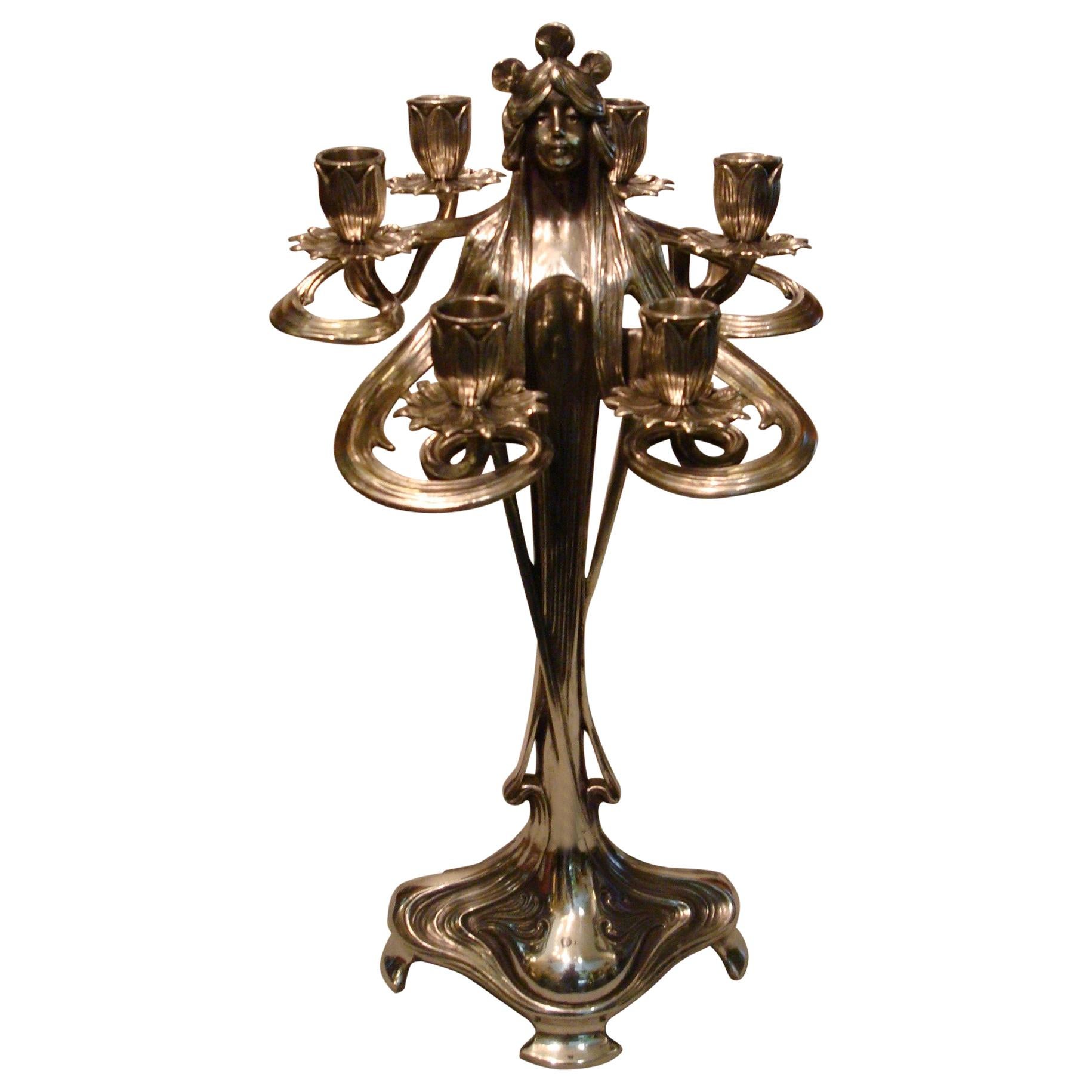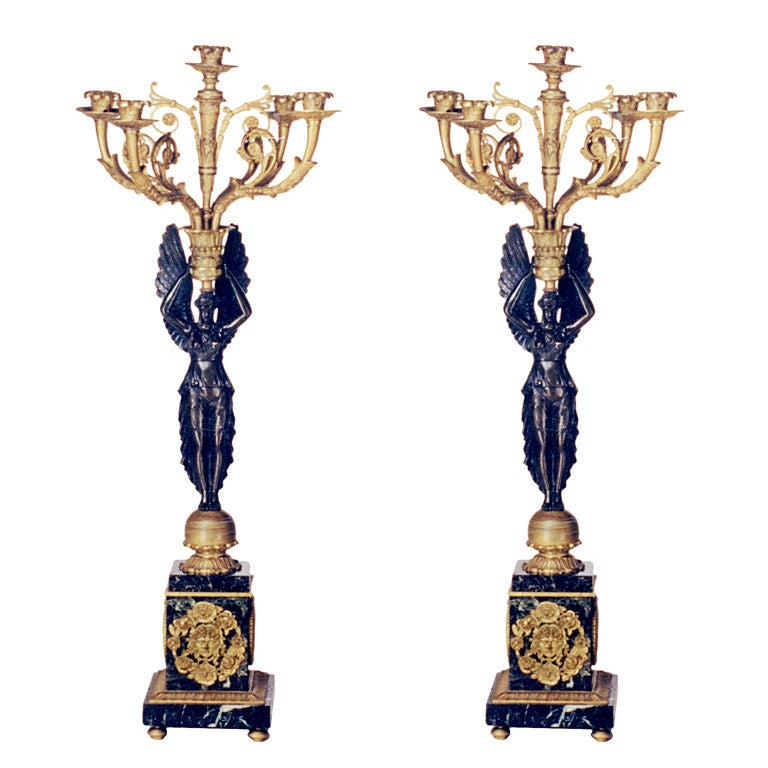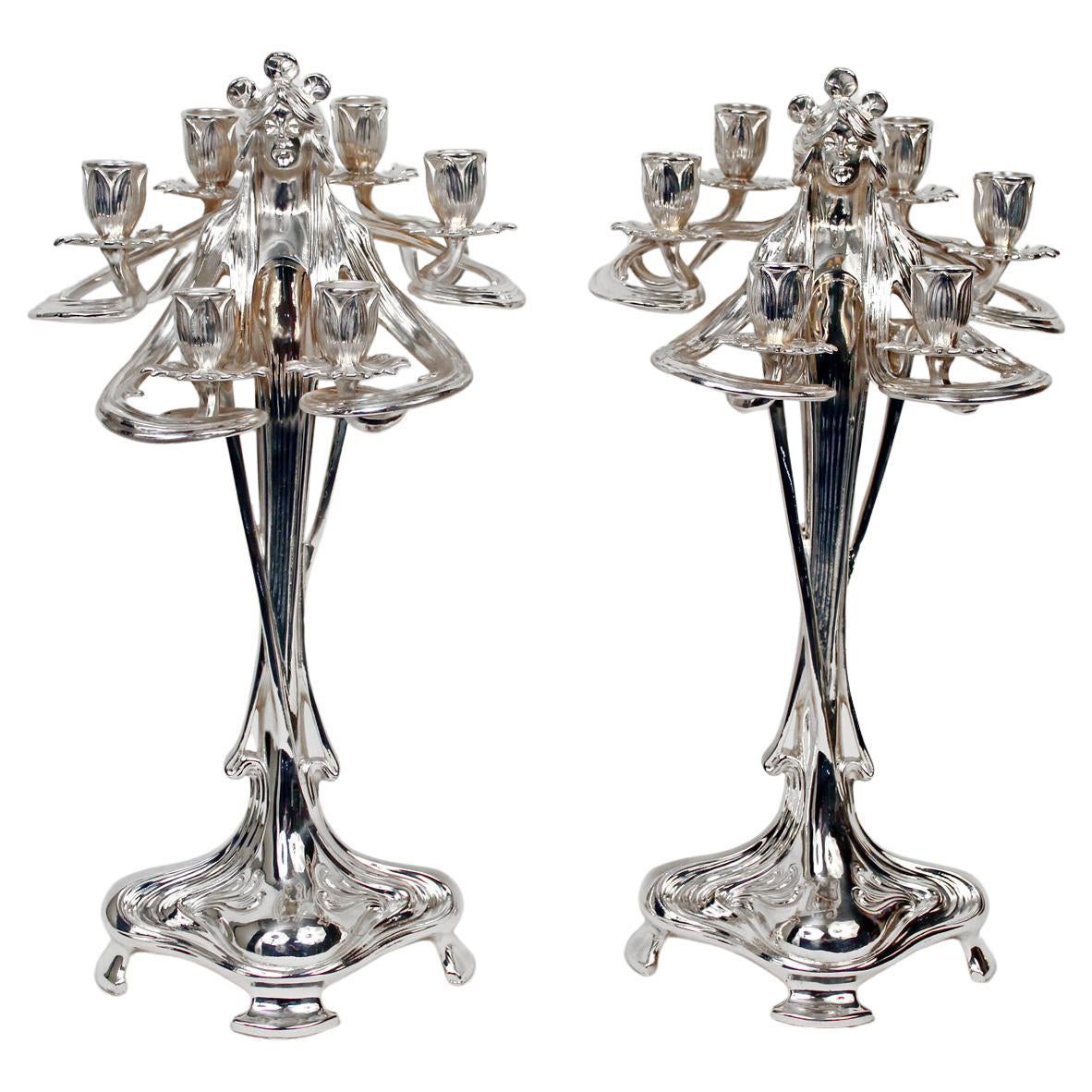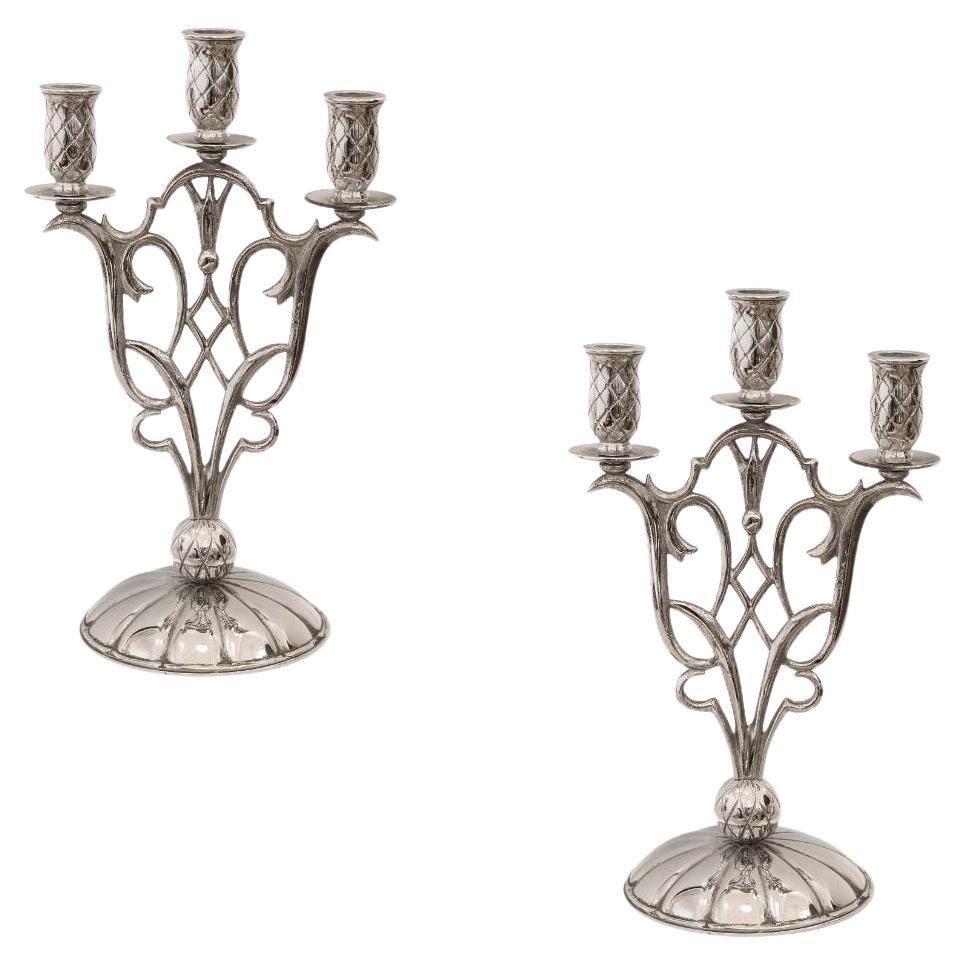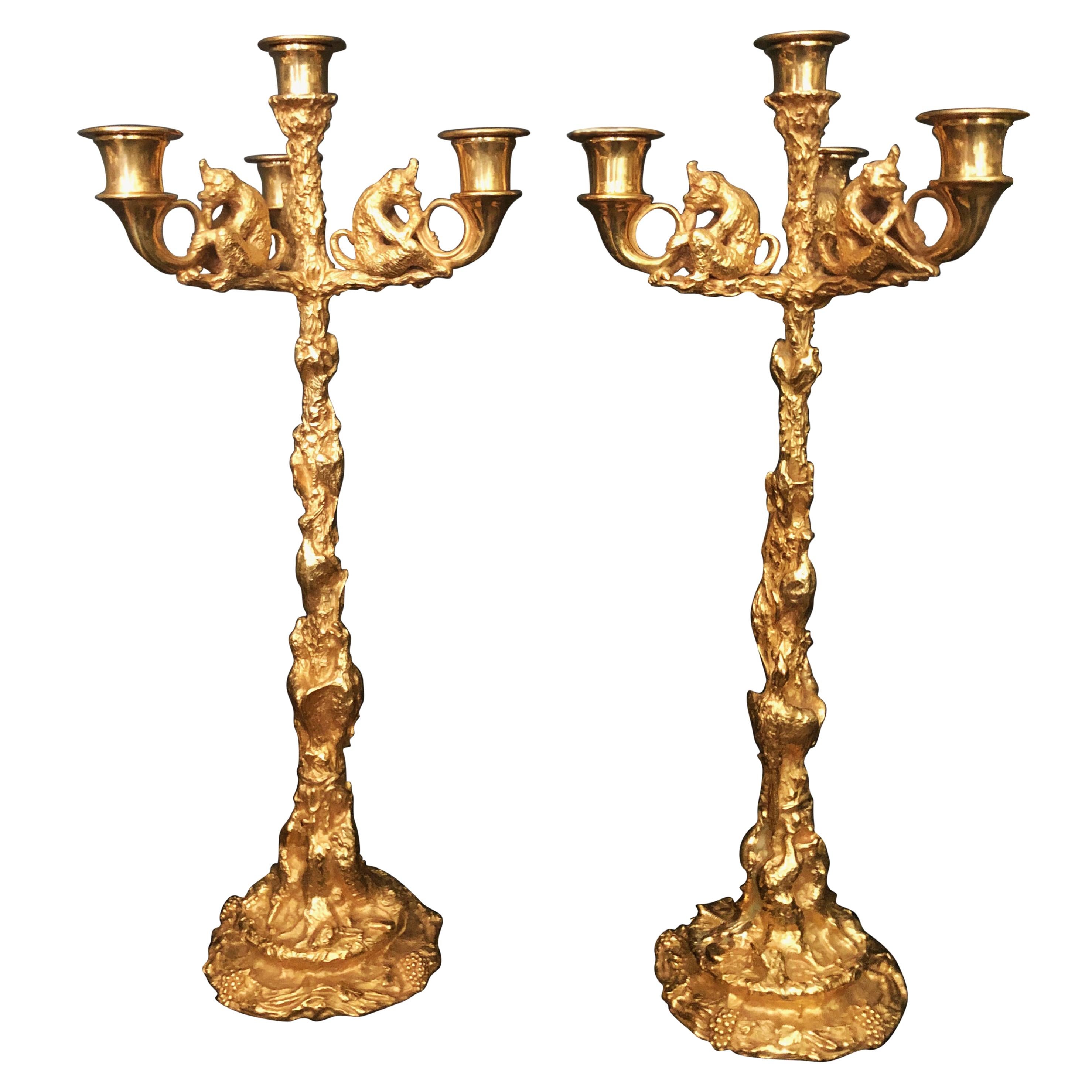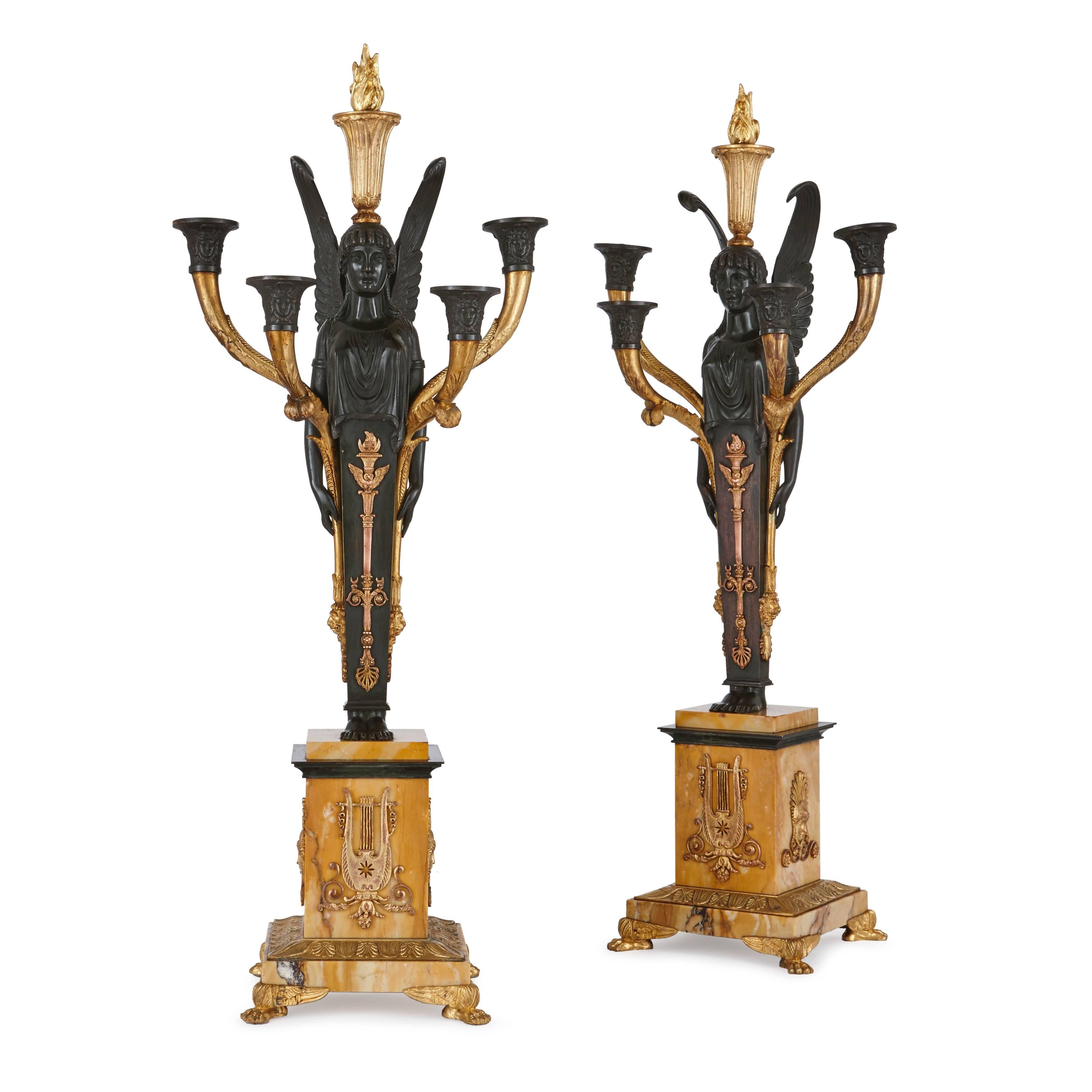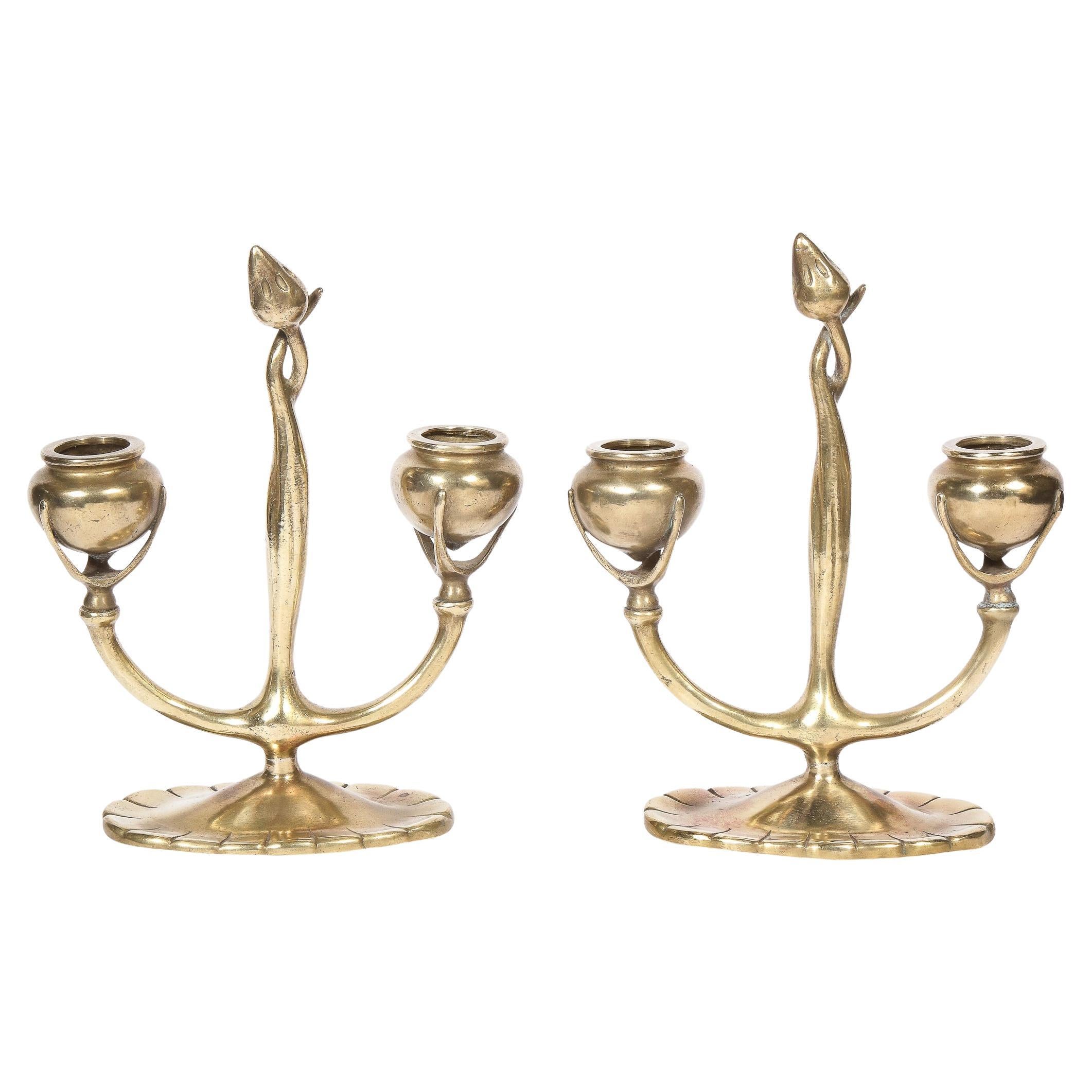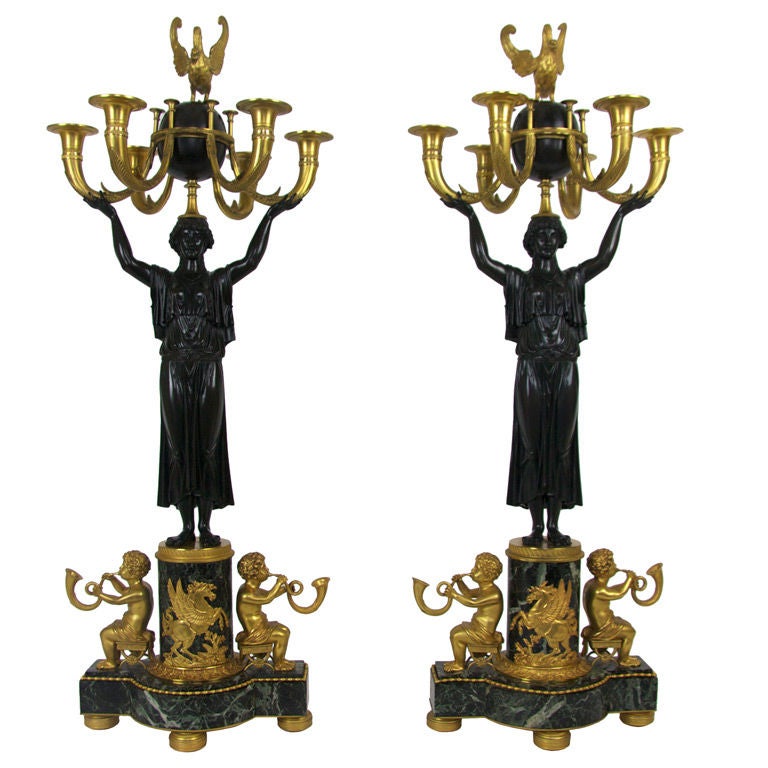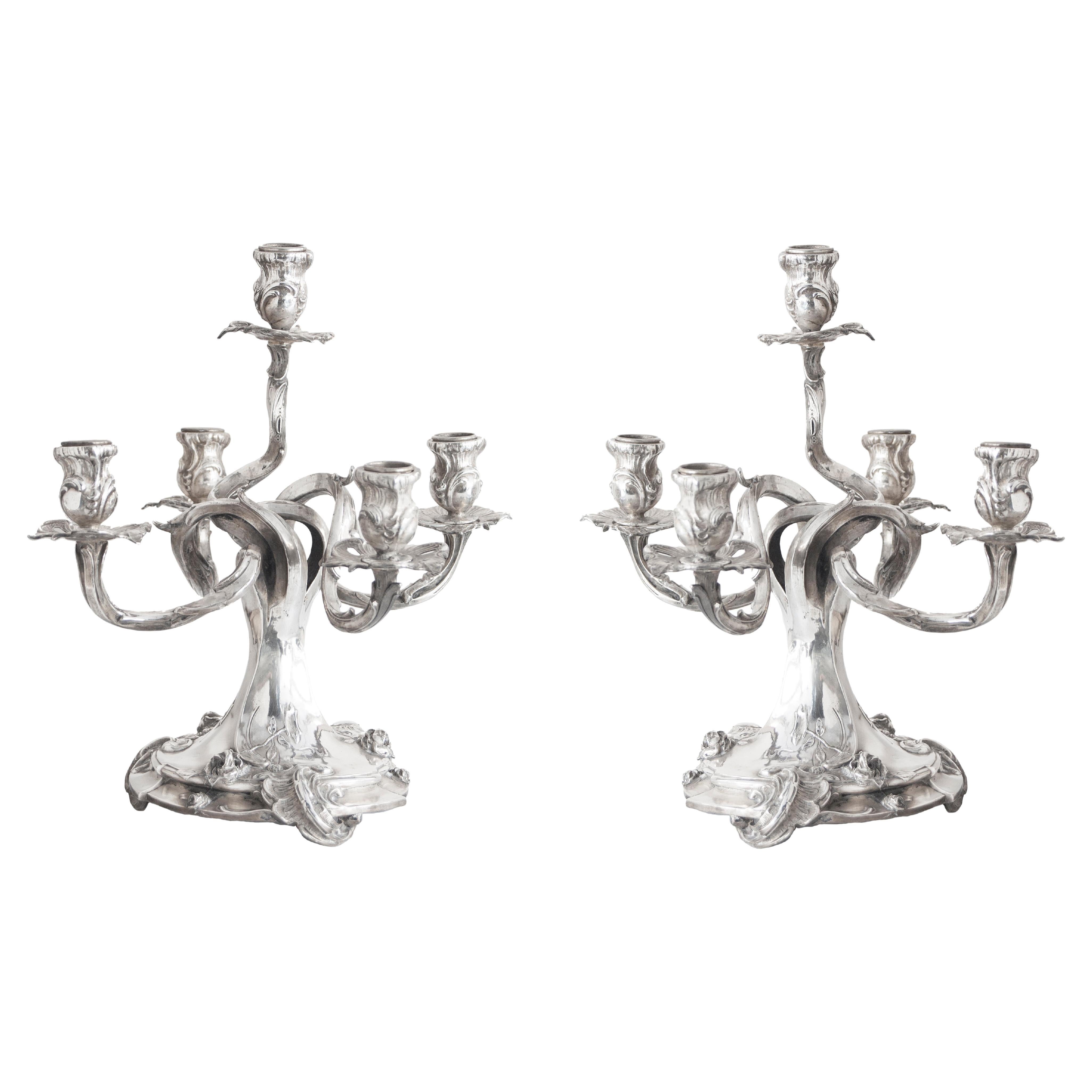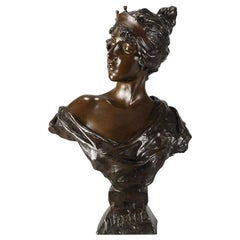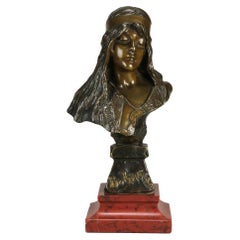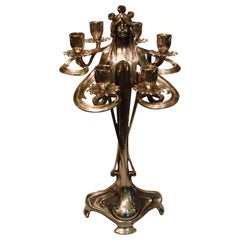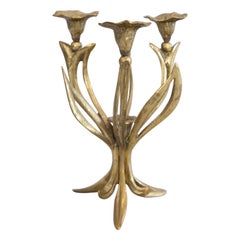
Art Nouveau Bronze Pair of Candelabra, circa 1900
View Similar Items
Want more images or videos?
Request additional images or videos from the seller
1 of 11
Art Nouveau Bronze Pair of Candelabra, circa 1900
About the Item
- Dimensions:Height: 20.08 in (51 cm)Width: 7.88 in (20 cm)Depth: 7.88 in (20 cm)
- Style:Art Nouveau (In the Style Of)
- Materials and Techniques:
- Place of Origin:
- Period:
- Date of Manufacture:1900
- Condition:Wear consistent with age and use.
- Seller Location:London, GB
- Reference Number:Seller: 85511stDibs: LU3216326457872
About the Seller
5.0
Gold Seller
These expertly vetted sellers are highly rated and consistently exceed customer expectations.
Established in 1936
1stDibs seller since 2017
63 sales on 1stDibs
More From This SellerView All
- Art Nouveau Bronze Bust "Lucrece” by E VillanisBy Emmanuel VillanisLocated in London, GBA entrancing late 19th century French Art Nouveau bronze bust entitled ‘Lucrece’, of a beautiful classical lady modeled in the Art Nouveau style with excellent rich brown variegated patina and smooth tactile surface detail. Signed E Villanis...Category
Antique Late 19th Century French Art Nouveau Busts
MaterialsBronze
- Art Nouveau Bronze Sculpture Entitled "Cleopatra and Asp" by SchnauderBy Richard Georg SchnauderLocated in London, GBA very fine early 20th Century gilt bronze figure of the famous Cleopatra with a snake wrapped around her wrist drinking from a bowl. Exhibiting fine colour and excellent hand fi...Category
Early 20th Century German Art Nouveau Figurative Sculptures
MaterialsMarble, Bronze
- 19th Century Art Nouveau Bronze Bust Entitled "Bohémienne" by Emmanuel VillanisBy Emmanuel VillanisLocated in London, GBCaptivating late 19th century French bronze bust of a beautiful woman, enhanced by the variegated rich brown patination and excellent tactile surface detail, raised on an integral bronze base with raised title to the fore. Signed ?E Villanis and further raised on a breche griotte stepped and shaped marble plinth ADDITIONAL INFORMATION Height: 33 cm Width: 16 cm Depth: 11 cm Condition: Excellent Original Condition circa: 1890 Materials: Bronze Book Ref: Emmanuel Villanis by Josje Hortulanus-de Mik Page No: 17 SKU: 8616 ABOUT Puccini's Opera - La Bohème SYNOPSIS - A group of friends are living a Bohemian life in Paris and trying to make their livings creating art. Rodolfo, the writer, falls in love with the seamstress, Mimi, while Marcello, the painter, and Musetta, the singer, are the on-and-off-again couple by their sides. When the four are happy, they spend their time celebrating life and love. However, Mimi is revealed to be very ill, and Rodolfo struggles to come to terms with the fact that she will inevitably die. Rodolfo and Mimi break up, and months later, Musetta discovers Mimi extremely sick and close to death. She brings Mimi to Rodolfo and Marcello's apartment. Rodolfo immediately takes her in and tries to nurse her back to health, but he is too late. Almost as soon as the two are reunited and have professed their love for one another, Mimi succumbs to her illness and dies. Emmanuel Villanis Emmanuel Villanis was an industrious man. He is believed to have created some 200 to 250 pieces. His oeuvre pre-eminently consisted of busts and full body statues. Most of these were manufactured in bronze, but there are also models in white metal and terra cotta. Different patinas were used. The bronzes were mainly cast by the Societé de Bronzes de Paris and can be recognised by the round stamp...Category
Antique Late 19th Century French Art Nouveau Busts
MaterialsMarble, Bronze
- Late 19th Century Art Nouveau Bronze Entitled "Broken Jug" by Charles AnfrieBy Charles AnfrieLocated in London, GBA very fine late 19th century bronze figure of a young lad dressed in period attire holding a broken jug, with excellent rich brown patina and fabulous hand finished surface detail, signed & titled ADDITIONAL INFORMATION Height: 20 cm Condition: excellent original condition Circa: 1890 Materials: Bronze SKU: 8279 ABOUT Charles Anfrie...Category
Antique 1890s French Art Nouveau Figurative Sculptures
MaterialsBronze
- Early 20th Century Art Nouveau Bronze Entitled "La Jeuneuse" by Antonin CarlèsBy Antonin CarlèsLocated in London, GBA delightful Art Nouveau early 20th Century gilt bronze figure of a very beautiful young lady holding a flower in her right hand, the surface of the bronze exhibiting fine detail and...Category
Antique Early 1900s French Art Nouveau Figurative Sculptures
MaterialsBronze
- 19th Century Art Nouveau Bronze Entitled "Venus & Cupid" by Jean Sul-AbadieBy Jean AbadieLocated in London, GBA very fine bronze study of Venus taking an arrow from Cupid her son, who at times would shoot his arrows without meaning or reason into the hearts of men, igniting their desire. Exhibiting excellent rich brown patina and good detail, signed Sul Abadie and stamped. Additional information Height: 93 cm Condition: excellent condition Circa: 1885 Materials: bronze & marble SKU: 4979 ABOUT Jean Sul-Abadie Jean Sul-Abadie (Born 1850 ~ Died 15th April 1890) was a French artist, a pupil of Jouffroy and Falguière. Specialising in bronze sculpting in the Art Nouveau style. He made his Salon debut in 1872. Cupid & Venus Different tales exist about the origin of Venus and Cupid. Some say that Venus, the goddess of love and beauty, had a love affair with Mars, the god of war. Out of this relationship, Cupid was born. In the following painting you see Venus with Mars, who is being disarmed by Cupid. Cupid has attributes from both of his parents. Like his mother he is considered to be the god of love, or more precisely, the god of falling in love. He is portrayed as an innocent little child with bow and arrows. He shoots arrows to the heart, and awakening a love that you’re powerless to resist. In classical mythology, Cupid (Latin Cupido, meaning “desire”) is the god of desire, erotic love, attraction and affection. He is often portrayed as the son of the love goddess Venus and the war god Mars, and is known in Latin also as Amor (“Love”). His Greek counterpart is Eros. Although Eros is in Classical Greek art as a slender winged youth, during the Hellenistic period, he was increasingly portrayed as a chubby boy. During this time, his iconography acquired the bow and arrow that represent his source of power: a person, or even a deity, who is shot by Cupid’s arrow is filled with uncontrollable desire. In myths, Cupid is a minor character who serves mostly to set the plot in motion. He is a main character only in the tale of Cupid and Psyche, when wounded by his own weapons he experiences the ordeal of love. Although other extended stories are not told about him, his tradition is rich in poetic themes and visual scenarios, such as “Love conquers all” and the retaliatory punishment or torture of Cupid. In art, Cupid often appears in multiples as the Amores, or amoriniin the later terminology of art history, the equivalent of the Greek erotes. Cupids are a frequent motif of both Roman art and later Western art of the classical tradition. In the 15th century, the iconography of Cupid starts to become indistinguishable from the putto. Cupid continued to be a popular figure in the Middle Ages, when under Christian influence he often had a dual nature as Heavenly and Earthly love. In the Renaissance, a renewed interest in classical philosophy endowed him with complex allegorical meanings. In contemporary popular culture, Cupid is shown drawing his bow to inspire romantic love, often as an icon of Valentine’s Day. Venus is the Roman goddess whose functions encompassed love, beauty, sex, fertility, prosperity, victory, and desire. In Roman mythology, she was the mother of the Roman people through her son, Aeneas, who survived the fall of Troy...Category
Antique Late 19th Century French Art Nouveau Figurative Sculptures
MaterialsBreccia Marble, Bronze
You May Also Like
- Pair of Silvered Pewter Art Nouveau Candelabra by Achille GambaBy Achille GambaLocated in Buenos Aires, OlivosArt Nouveau silvered Pewter Candelabra a pair Pair of Art Nouveau silvered pewter candelabra / candleholder with female figure surrounded by 6 arms for six candles (probably WMF) ...Category
Early 20th Century German Art Nouveau Candelabras
MaterialsPewter
$5,000 Sale Price / set37% Off - Pair of Bronze CandelabraLocated in New York, NYImportant pair of French Empire-style five-light bronze candelabra. Each richly patinated winged victory figure rests on a serpentine base with gilt bronze mounts and holds an elabor...Category
Antique 19th Century French Candle Holders
MaterialsBronze
$18,000 / set - Art Nouveau French Brass Floral Candelabra, circa 1900Located in Pearland, TXA gorgeous antique Art Nouveau French solid brass candelabra with four candle holders. This stylish candelabra is solid and heavy, weighing a substantial 3 lbs 10 oz, with a beautifu...Category
Antique Early 1900s French Art Nouveau Candelabras
MaterialsBrass
- French Art Nouveau Grand Bronze Iris Candelabra, ca. 1900Located in New York, NYABOUT IRIS MOTIFS Iris motifs were popular during the Arts & Crafts movement. The genus of this easy-to-stylize flower has nearly 300 varieties that bloom in many colors—thus its nam...Category
Antique Early 1900s French Art Nouveau Candelabras
MaterialsBronze
- Pair of Medusa Art Nouveau CandelabrasBy WMF Württembergische MetallwarenfabrikLocated in Miami, FLPair of iconic Art Nouveau silver plated candle holders by WMF depicting two female figures. Made in Germany. Circa: 1900.Category
Early 20th Century French Art Nouveau Candelabras
MaterialsMetal, Silver Plate
$9,500 / set - Big Pair of Candelabras, Jugendstil, Art Nouveau, France, 1900, Sign, ChristofleBy ChristofleLocated in Ciudad Autónoma Buenos Aires, CCenterplace, Sign: Christofle Metal: Silver plated We have specialized in the sale of Art Deco and Art Nouveau and Vintage styles since 1982.If you have any questions we are at you...Category
Antique Early 1900s French Art Nouveau Candelabras
MaterialsMetal
Recently Viewed
View AllMore Ways To Browse
Art Nouveau Bronze Candelabras
Green Marble Candle Holder
Figural Four Light Candelabra
Bronze Torso Green
Art Nouveau Figural Candle Holders
Tall Candelabra
Candelabra Tall
Gold Cast Candelabra
Antique Crystal Candle Holders
Antique Crystal Candle Holder
Flower Candelabra Pair
Candelabra Figure
Iron Candelabra Holders
Figural Candelabra
Figure Candelabra
Marble Base Candelabra
Candelabras Marble Base
Marble Cup
